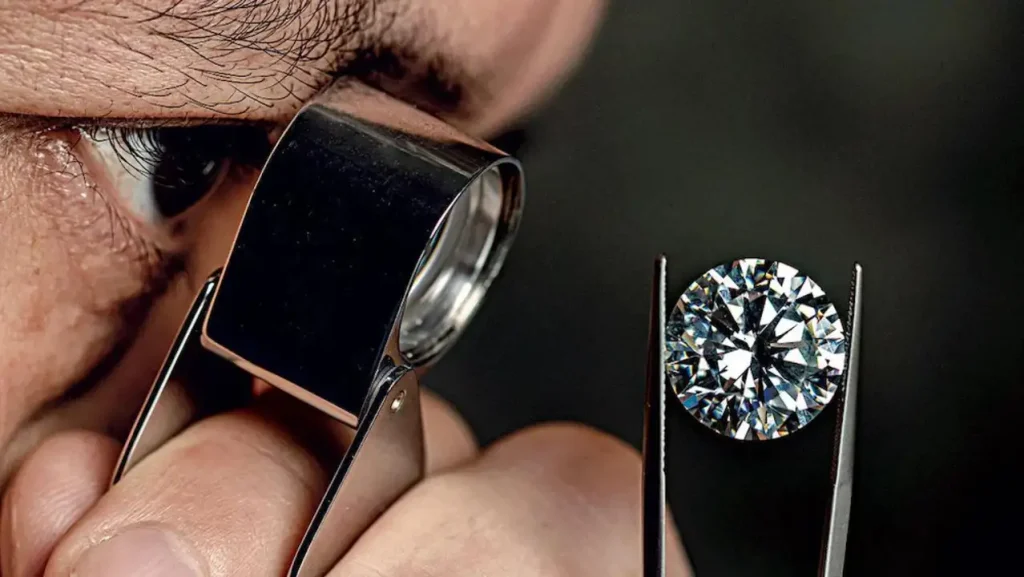Last month, at a trendy rooftop engagement party in Brooklyn, something quietly revolutionary happened. As guests cooed over Sarah Chen’s stunning three-carat solitaire, she smiled and shared a detail that stopped conversations mid-sentence: “It’s lab-grown. No mining, no conflict, no compromise on beauty.” The ring sparkled just as brilliantly as any traditional diamond, but its story shone even brighter.
This moment captures something profound happening in luxury consumption today. A generation that grew up questioning everything—from fast fashion to fossil fuels—is now rewriting the rules of romance and status symbols. They’re demanding that their most precious purchases reflect their deepest values, and the jewelry industry is scrambling to keep up.
The diamond engagement ring, that ultimate symbol of eternal love, is experiencing its own evolution. And at the center of this transformation are lab-grown diamonds—stones that challenge everything we thought we knew about rarity, value, and what makes something truly precious.
The Dark Side of Forever
For all the romantic mythology surrounding natural diamonds, the reality of their extraction tells a different story. Traditional diamond mining moves approximately 250 tons of earth to uncover a single carat—imagine displacing a football field’s worth of soil for a stone smaller than a child’s fingernail. The environmental devastation extends far beyond the initial dig: water contamination, habitat destruction, and carbon emissions from heavy machinery paint a picture that’s anything but romantic.
The human cost runs even deeper. Despite decades of industry promises and the establishment of the Kimberley Process in 2003, conflict diamonds—stones that fund armed violence and human rights abuses—still find their way into mainstream markets. Workers in mining regions often face dangerous conditions for minimal pay, while entire communities deal with displacement and environmental degradation long after the diamonds are gone.
Perhaps most troubling is the industry’s deliberate opacity. Unlike virtually every other luxury product today, diamonds often come with murky supply chains and vague origins. In an age where consumers can trace their coffee beans to specific farms and their clothing to individual factories, the diamond industry’s resistance to transparency feels increasingly archaic.
For conscious consumers, this creates an uncomfortable paradox: how do you celebrate love with a symbol that might represent suffering?
Science Meets Sentiment
Enter lab-grown diamonds—or as some prefer to call them, cultured diamonds. These aren’t synthetic substitutes or clever imitations; they’re chemically, physically, and optically identical to mined diamonds. The only difference lies in their birthplace: a high-tech laboratory instead of the earth’s crust.
Two primary methods create these modern marvels. High Pressure High Temperature (HPHT) technology replicates the intense conditions found 90 miles beneath the earth’s surface, while Chemical Vapor Deposition (CVD) builds diamonds atom by atom from carbon-rich gases. Both processes produce genuine diamonds in a matter of weeks rather than billions of years.
The technology isn’t entirely new—scientists have been creating industrial diamonds since the 1950s. What’s revolutionary is the recent ability to produce gem-quality stones that rival nature’s finest work. Today’s lab-grown diamonds can achieve the same cut, clarity, color, and carat specifications as their mined counterparts, often with superior consistency due to controlled growing conditions.
More importantly, they come with complete transparency. Every lab-grown diamond has a clear chain of custody, known environmental impact, and zero connection to conflict or exploitation. For many consumers, this provenance adds rather than subtracts from the stone’s appeal.
Beyond Trendy: An Ethical Revolution
What we’re witnessing isn’t just a fashion moment—it’s a fundamental shift in how we define luxury and value. Today’s conscious consumers are looking to explore ethical diamond options that reflect their values, not just their fashion sense. They want their purchases to align with their beliefs about environmental stewardship, human rights, and technological progress.
The environmental benefits are substantial. Lab-grown diamonds require 85% less water than mining operations and generate significantly fewer carbon emissions. As renewable energy sources power more production facilities, this gap will likely widen further. For consumers who drive electric cars, buy carbon offsets, and choose sustainable brands across categories, lab-grown diamonds represent a logical extension of their lifestyle choices.
The social impact resonates equally strongly. Young professionals who volunteer for environmental causes, donate to human rights organizations, and research corporate responsibility before making purchases find comfort in knowing their engagement ring didn’t contribute to exploitation or environmental destruction.
Economically, lab-grown diamonds democratize luxury in powerful ways. With prices typically 30-70% lower than comparable mined stones, couples can choose larger, higher-quality diamonds within the same budget, or redirect savings toward other life priorities like homeownership, travel, or debt reduction.
Debunking the Myths
Critics often dismiss lab-grown diamonds as “lesser” alternatives, but this perspective increasingly feels outdated and elitist. The most common objection—that lab-grown diamonds lack investment value—reveals a fundamental misunderstanding of why most people buy engagement rings. These aren’t commodities traded for profit; they’re symbols of commitment meant to last lifetimes.
So are lab diamonds worth it? For an increasing number of consumers, the answer is a brilliant yes. The quality argument holds no water—lab-grown diamonds often exhibit superior clarity and color consistency compared to mined stones. The durability remains identical—both will outlast their owners by millennia.
The resale value concern, while legitimate, affects a tiny minority of purchasers. Most engagement rings never return to market, and those that do typically retain only 25-40% of their retail value regardless of origin. For the vast majority of buyers, the emotional and symbolic value far outweighs any financial considerations.
Market trends support the growing acceptance. Lab-grown diamonds now account for nearly 20% of engagement ring sales in some demographics, with that percentage rising annually. Major retailers from Pandora to Tiffany & Co. have introduced lab-grown collections, while specialized companies like Labrilliante have built entire business models around sustainable luxury.
Industry Voices and Market Reality
“The conversation has completely shifted in the past five years,” notes Dr. Jennifer Martinez, a gemologist who’s worked with both mined and lab-grown diamonds for over two decades. “Young couples come in asking specific questions about environmental impact and ethical sourcing. They’re not content with vague assurances—they want facts, figures, and transparency.”
This sentiment echoes across the industry. Jewelry retailers report that educated consumers often arrive with extensive research about lab-grown options, asking detailed questions about production methods, certification standards, and environmental impact. The old sales approach of emphasizing rarity and geological age increasingly falls flat with audiences who value innovation and responsibility over tradition alone.
Investment analysts predict continued growth for the lab-grown segment, with some forecasting that cultured diamonds could capture 30-40% of the engagement ring market within the next decade. This isn’t just wishful thinking from startups—it’s supported by consumer behavior patterns, price trends, and generational value shifts.
Celebrity endorsements have normalized the choice without making it feel like a compromise. When Emma Watson, Lady Gaga, and other influential figures choose lab-grown diamonds for red carpet events, they signal that these stones meet the highest standards of beauty and sophistication.
The Future Is Sparkling
The diamond industry stands at an inflection point. Traditional players can either evolve with changing consumer values or risk obsolescence as newer, more responsive companies capture market share. The smart money is adapting—offering transparency, embracing technology, and acknowledging that luxury in the 21st century looks different than it did in the 20th.
For consumers, this evolution represents unprecedented choice and empowerment. They no longer need to choose between beauty and conscience, quality and affordability, or tradition and innovation. Lab-grown diamonds offer all of these simultaneously, wrapped in a story that makes the wearer feel proud rather than conflicted.
The rise of ethical bling represents more than jewelry trends—it reflects broader cultural shifts toward conscious consumption, technological optimism, and values-based decision making. When couples choose lab-grown diamonds, they’re not just buying engagement rings; they’re voting for the kind of world they want to build together.
As Sarah Chen discovered at her engagement party, sometimes the most radical act is simply telling the truth about your choices. In a world that desperately needs more sustainable, ethical alternatives to destructive traditions, lab-grown diamonds offer something precious: hope that we can have beautiful things without ugly consequences.
The future of diamonds isn’t buried in the earth—it’s being created by human ingenuity, one brilliant stone at a time.
Visit our blog for more!







